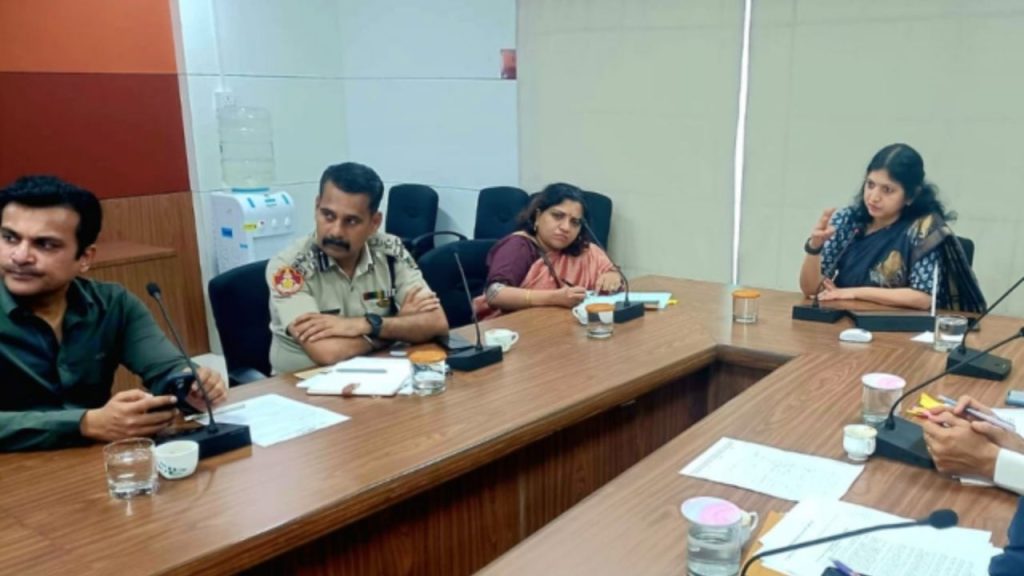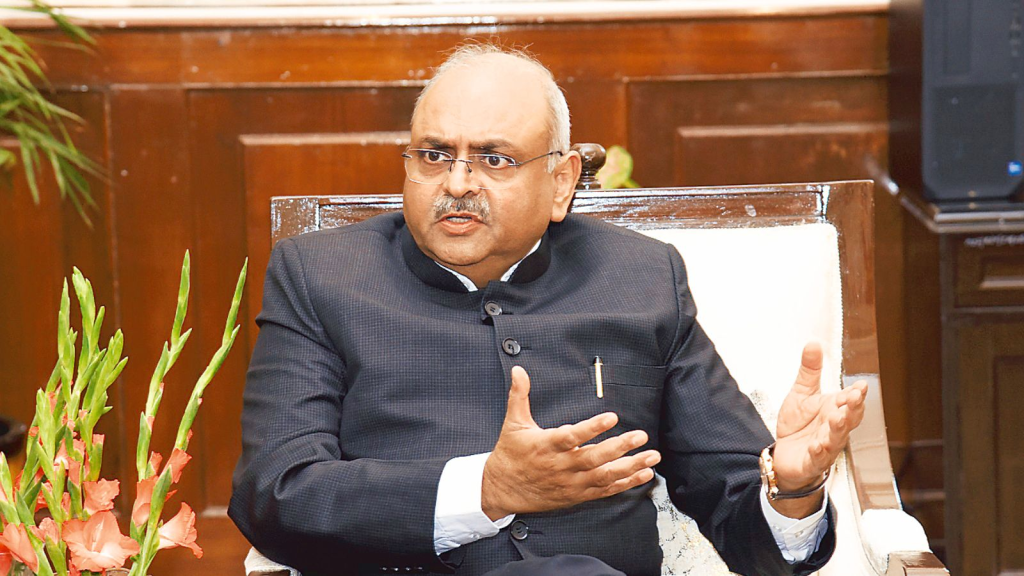In the world of taxes, things are always changing—new rules, new technologies, and new ways to make life easier for taxpayers. One of the biggest changes in recent years is the push towards digital transformation, and the Central Board of Direct Taxes (CBDT) has been leading the charge. This was especially evident on July 24, 2025, when India celebrated its 166th Income Tax Day in Odisha. The day marked a major milestone in the country’s tax system and featured an insightful address from Ravi Agrawal, the Chairman of the CBDT.

The CBDT’s chief didn’t just talk about how far the Income Tax Department has come; he shared exciting plans for the future, all of which revolve around one thing: making the tax process more efficient, transparent, and taxpayer-friendly. In this article, we’re going to break down what CBDT’s digital transformation means for both the average taxpayer and tax professionals.
CBDT Chief Highlights Tax Dept’s Digital Transformation
| Key Highlights | Details |
|---|---|
| Event Date | July 24, 2025 – 166th Income Tax Day celebration in Odisha. |
| Digital Transformation Focus | A shift towards efficient, tech-driven solutions, including the development of the Income Tax Bill, 2025. |
| Transparency & Efficiency | The CBDT is using data analytics to simplify and streamline processes for voluntary tax compliance. |
| Vision for the Future | Strengthening tax-payer relations through enforcement with empathy, making the tax system easier and less intimidating. |
| Cultural Engagement | Cultural performances, including a Chhau dance, honored the contribution of the people in nation-building. |
| Awards & Recognition | Meritorious officers and doctors were recognized for their service and dedication. |
For full details on these changes, visit the official website of the Income Tax Department.
The CBDT’s digital transformation is a sign of India’s commitment to modernizing its tax system for the benefit of all citizens. With initiatives like the Income Tax Bill, 2025 and improved data analytics, the future of tax filing is easier, faster, and more transparent. Whether you’re a taxpayer or a tax professional, these changes will make life smoother and more efficient.
By staying ahead of these changes, you can ensure compliance, reduce stress, and take advantage of the benefits of digital transformation. Keep an eye on updates from the CBDT, as they continue to evolve and shape the tax landscape.
A New Era for India’s Tax System
The digital transformation of India’s tax system is one of the most significant changes we’ve seen in the last few years. Not only does it benefit ordinary taxpayers, but it also enhances the professionalism and effectiveness of tax officers across the country. The days of long queues, paperwork stacks, and confusing forms are becoming a thing of the past.
What Does Digital Transformation Mean for You?
To break it down: digital transformation means that the government is using technology to make the tax filing process smoother and more transparent. Here’s how this will benefit both taxpayers and tax professionals:
- Simplified Filing: You no longer need to worry about paper forms or mailing documents. Everything from filing your taxes to checking your status can now be done online. The introduction of the e-filing portal has already been a game-changer for millions of people.
- More Accurate Information: With the help of data analytics, the Income Tax Department can spot trends, ensure accurate assessments, and identify potential issues with a taxpayer’s information. This reduces the chances of errors and delays.
- Faster Processing Times: Instead of waiting for months to get your tax returns processed, digitalization is speeding things up. Instant assessments and automatic updates are making tax filing much less stressful.
- Increased Transparency: You can track your return status and any actions taken by the department through online platforms. This builds trust and ensures everyone is on the same page.
But what’s even more exciting is that the CBDT’s future roadmap includes making it even easier for people to get the help they need. Whether you’re a small business owner or a tax consultant, these changes are designed to make your life simpler.

Breaking Down CBDT’s Digital Vision
At the heart of this digital transformation is the Income Tax Bill, 2025. This new bill is expected to redefine the way taxes are calculated, processed, and enforced across India. Here’s a closer look at the key provisions:
The Income Tax Bill, 2025: A Game Changer
The CBDT is actively developing rules, forms, and procedures under the new bill. This is going to streamline a lot of the bureaucratic processes that many have found overwhelming in the past. If you’re wondering how this will affect you, here’s what you can expect:
- Data-Driven Taxpayer Services: By integrating data analytics into the tax system, the CBDT will be able to identify discrepancies and improve the overall accuracy of tax assessments. This means less paperwork for taxpayers and fewer chances of being incorrectly taxed.
- Empathy in Enforcement: One of the more human-centric changes is the idea of ‘enforcement with empathy.’ Rather than solely focusing on penalties for non-compliance, the CBDT is focusing on helping taxpayers to voluntarily correct any issues with their tax filings. This approach helps build trust and creates a less intimidating environment for taxpayers to update their records.
- Streamlined Reporting: The Income Tax Bill will introduce new reporting guidelines for businesses and individuals, making it easier to comply with tax regulations
How Does This Affect Tax Professionals?
As a tax professional, these changes should excite you. The digital transformation not only makes the process more transparent, but it also helps you serve your clients better. Here’s how:
- Faster Processes: No more endless paperwork or dealing with back-and-forth emails. The use of automated systems for assessments means fewer manual interventions and faster processing times for your clients.
- Simplified Client Communication: The digital tools provided by the CBDT will allow you to track and manage your clients’ information more efficiently. The shift to digital platforms means you can help your clients stay compliant more easily, and without the stress that used to come with tax season.
- Greater Accuracy: By relying on automated data and analytics, you’ll reduce the chance of errors and make the tax filing process far more streamlined. You can focus on strategic tax planning rather than spending time correcting mistakes.
A CBDT Chief Highlights Tax Dept’s Digital Transformation Guide for Taxpayers
If you’re new to this world of digital taxes or just need a refresher, here’s a quick guide to navigating the new digital tax landscape:
Step 1: Register on the E-Filing Portal
First things first, make sure you’re registered with the Income Tax Department’s official e-filing portal. This is where you’ll submit your returns, track your status, and access all relevant information.
- Visit the website: Go to Income Tax India’s E-filing portal.
- Create an account: Provide the necessary details like your PAN number, date of birth, and bank account information.
Step 2: File Your Return Online
The portal provides a simple interface for filing your tax return. Depending on your income, there are different forms available (ITR 1, ITR 2, etc.), so make sure you select the right one.
- Pre-fill details: The system will help by automatically pre-filling most of your personal details from previous filings.
- Review your return: Make sure everything is accurate, and if you’re unsure, seek advice from a tax professional.
Step 3: Submit and Track Status
Once you’ve submitted your return, you can easily track its status through the portal. If any issues arise, the system will notify you.
- Automated Assessments: The processing times are faster than before, and you can check the status of your assessment anytime.
Odisha Government Approves ₹4,982.66 Crore Investment Boom: 23 Proposals Set to Transform the State
BDA Grants Apartment Associations Power to Cut Off Utilities for Defaulters
Passengers Left Stranded Amid Odisha’s Ongoing Fuel Crisis and Drivers’ Strike
FAQs
1. How has the digital transformation improved tax compliance in India?
The digital transformation has reduced manual errors, ensured faster processing, and increased transparency. Data analytics helps identify discrepancies, allowing taxpayers to rectify issues early on.
2. Is the new Income Tax Bill beneficial for small business owners?
Yes, the Income Tax Bill, 2025 will simplify compliance and reporting, making it easier for small business owners to file returns without worrying about complex tax procedures.
3. How do I register for the e-filing portal?
Simply visit the official Income Tax portal, click on ‘Register’, and provide the required details, including your PAN and personal information.
4. Can I file taxes through my mobile?
Yes, the Income Tax Department has mobile-friendly versions of the e-filing portal, allowing taxpayers to file returns through their smartphones.





